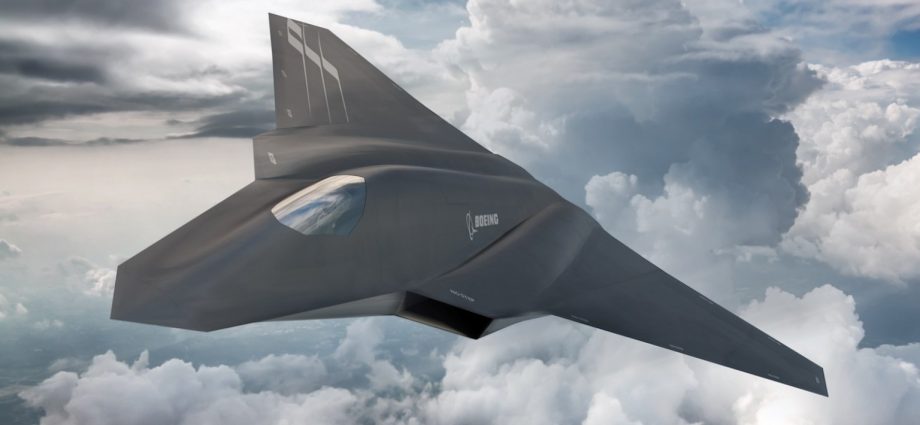Italy, Japan and the United Kingdom have signed a new treaty under the Global Combat Air Program (GCAP) to develop a sixth-generation stealth fighter by 2035, according to a Breaking Defense report.
The program will be headquartered in the UK, though a specific location was not disclosed in a UK Ministry of Defense press release. Breaking Defense says the program plans to launch its development phase in 2025 and start deliveries a decade later in 2035.
A Japanese national will serve as the program’s first chief executive officer while an Italian official will be tapped as the first leader of a separate “joint business construct” headquartered in the UK. The leadership of each structure will rotate between the partner countries, the report said.
UK Defense Secretary Grant Shapps stated that the UK-based headquarters will enable collaboration and at-pace decision-making working with Italy and Japan’s defense industries to deliver an outstanding aircraft.
The Breaking Defense report says the GCAP partnership could quickly expand, with Saudi Arabia expected to join GCAP “in due course,” though the Japanese government reportedly opposes the Gulf monarchy’s bid.
GCAP is one of several sixth-generation fighter aircraft programs active in the West, with the Future Combat Aircraft System (FCAS) effort in Europe set to select a fighter design for the program by 2025.
At the same time, the US plans to award a winning design for its Next Generation Air Dominance (NGAD) fighter by next year and enter it into service by 2030. The GCAP program is underpinned by several ambitious strategic objectives from each of its stakeholders, both collectively and individually.

In a June 2023 article for defense-aerospace.com, Jon Hemler mentions that GCAP aims to boost each member’s national defense, strengthen regional security in Europe for NATO, offset Chinese threats in the Pacific and produce an exportable next-generation fighter for the European and Pacific defense markets.
Hemler notes that the GCAP fighter will have advanced technologies for stealth, weapons delivery and manned-unmanned teaming.
Asia Times noted in December 2022 that for the UK, the GCAP program will bolster its strategic autonomy by giving it a robust national combat air sector to defend its interests without relying on others and reassert its image and credibility as an independent military power, which is increasingly in doubt.
Increasingly expensive tranche upgrades for the UK’s aging Eurofighter Typhoon fleet and the F-35’s non-optimization for air superiority missions may also have driven the UK to the GCAP next-generation fighter program.
As for Japan, Takeshi Sakade mentions in a May 2023 East Asia Forum article that Tokyo initially focused on “Japan-led development” for its Mitsubishi F-X fighter project, but as the US was reluctant to support Japan-led development through technology transfers, Japan opted for the UK as its primary partner for its next-gen fighter.
Sakade says that the GCAP’s success depends on expanding the number of production aircraft, achieving economy of scale and reducing the learning curve through European and Asia-Pacific exports, competing against the French-Spanish-German Future Combat Air System (FCAS) and South Korea’s KF-21 fighter programs.
As for Italy, David Cenciotti notes in a March 2023 article for The Aviationist that Rome aims for the GCAP to replace its legacy Eurofighters and the need for a next-generation combat aircraft that can achieve multi-domain effects during combat operations. As the ongoing Ukraine war has shown, such capabilities are essential in a strategic environment characterized by great power competition, Cenciotti notes.
Noting Saudi Arabia’s interest in the GCAP program, Joe Saballa mentions in an August 2023 article for Defense Post that unexpected delays in Saudi Arabia’s Eurofighter Typhoon order signed five years ago and the UK’s suspension of arms sales to Riyadh due to human rights concerns prompted the oil-rich nation to consider joining the GCAP program.
Asia Times noted in February 2022 that Saudi Arabia may be opting to buy fewer weapons from the US, including sophisticated fighter jets, as its arms purchases from the US have been criticized as overpriced, politically motivated and geared towards buying the most advanced and expensive systems regardless of Middle East nation’s actual security needs.
Saballa notes that Japan is opposed to Saudi Arabia’s participation in the GCAP program. Tokyo has reportedly said that including Saudi Arabia in the GCAP project would complicate which countries are allowed to purchase the aircraft and bringing in another country at this stage of the GCAP’s development would only delay production.
He also notes that while Saudi Arabia promised a sizeable financial contribution, Japan is doubtful that it can contribute any meaningful technology to the project.
Shigeto Kondo notes in a September 2023 Afkar article that including Saudi Arabia in the GCAP project would strengthen Japan’s ties with Saudi Arabia, which is currently Tokyo’s largest energy provider.
Riyadh’s inclusion would also help Japan to diversify and broaden its influence with Saudi Arabia as a major player in the Global South and prevent potential adversaries such as China and Russia from gaining leverage by selling the kingdom sophisticated military equipment.
However, the GCAP project may face difficulties taking off. In an April 2023 article for the Royal United Services Institute (RUSI), Justin Bronk mentions that the funding committed by GCAP stakeholders so far falls well short of the amount needed for a credible next-generation fighter program.

Bronk argues that the GCAP program is unlikely to produce a viable competitor to the US-made F-35 for the UK, Japan’s, or Italy’s operational requirements or the global export market.
As of 2022, the US had spent over US$412 billion on the F-35’s development and production with international partners, including the UK, Japan, and Italy, already contributing billions in funding, outstripping their committed financing to the GCAP program.
Bronk also says that Lockheed Martin and other US aircraft manufacturers have experience building advanced aircraft that GCAP stakeholders need and that constant upgrades to the F-35 can make it a viable competitor to the GCAP, defeating the rationale for developing a next-generation fighter from the ground up.

